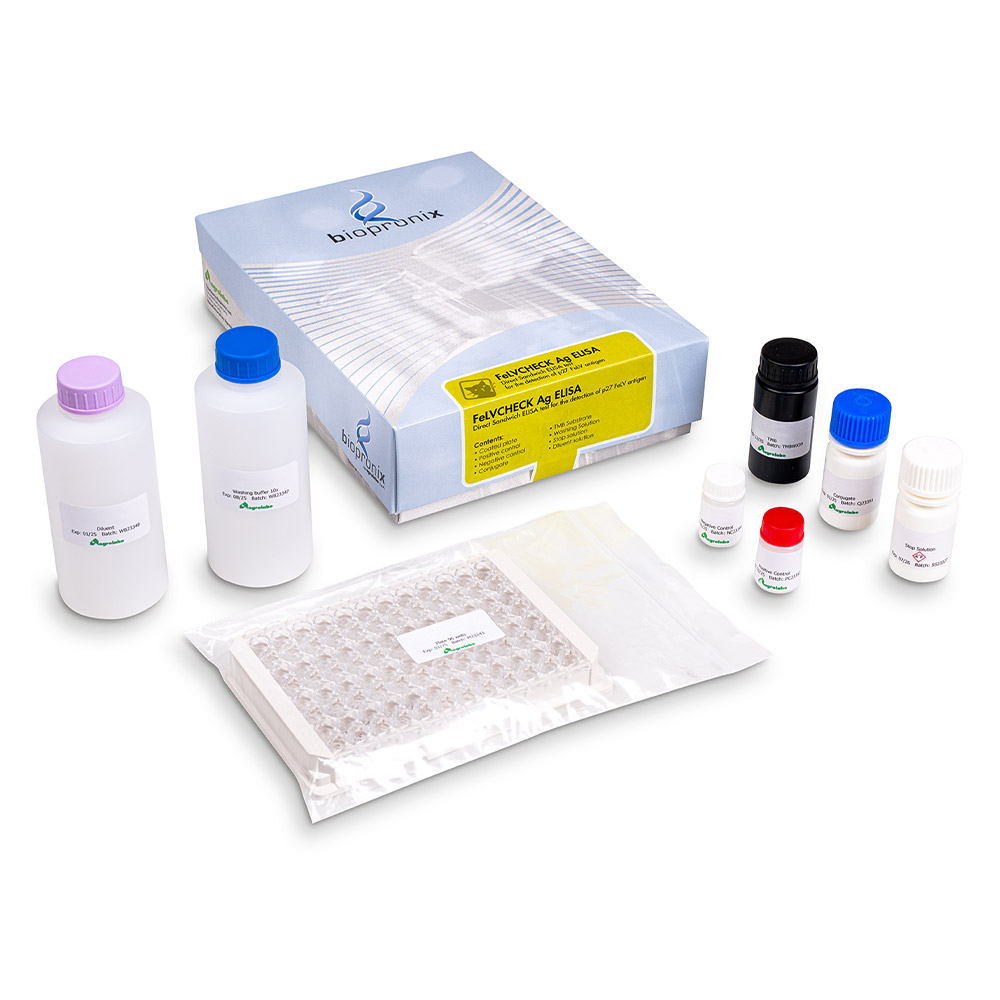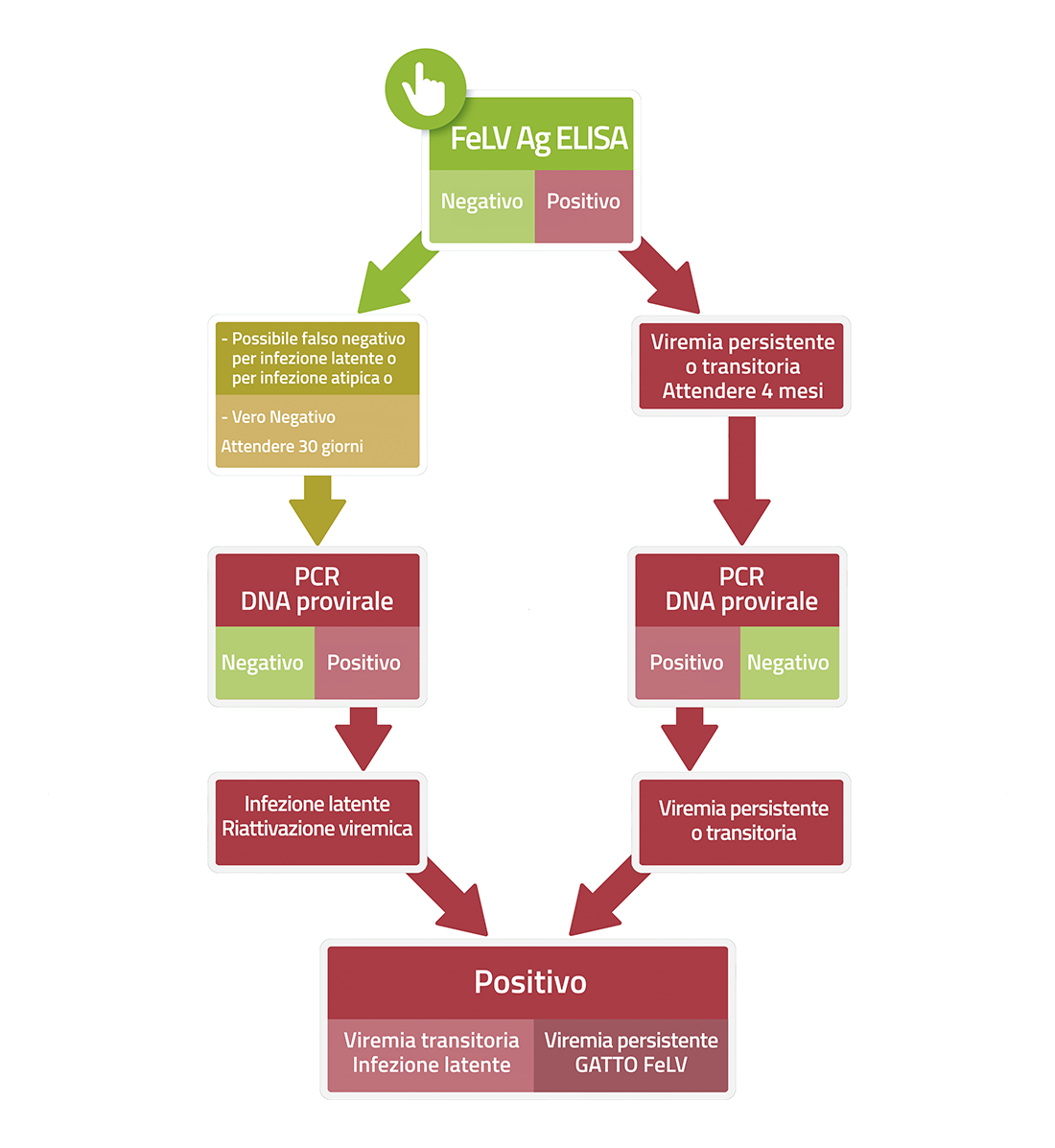FeLVCHECK Ag ELISA
ELISA kit for the detection of feline leukemia virus antigen
This kit is based on the monoclonal double antibody ELISA enzyme immunoassay technique for the detection of p27 FeLV antigen in felien serum or plasma.
Feline Leukemia Virus (FeLV) is an infectious disease supported by a retrovirus of the Oncovirinae subfamily and causes immunosuppression, neoplastic diseases and anaemia.
It is widespread and is a major cause of death in cats, related to risk factors such as access to the external environment or cohabitation (catteries, breeding establishments and shelters).
Transmission mainly occurs through contact with infected organic fluids (saliva above all) and bite wounds. Vertical transmission (in utero and through milk) is also possible. Susceptibility is greater in young cats.
After initial infection, the virus replicates at the level of the oropharyngeal lymphoid tissue and then at the level of the intestinal and respiratory mucosa and salivary glands; finally it spreads to the bone marrow.
Viremia usually appears after 2-4 weeks and is accompanied by fever, discomfort and lymphoadenopaty and develops according to different clinical pictures depending on different factors: the immune status and the age of the cat, the strain and viral concentration, as well as the duration of exposure.
In this way 3 courses are possible:
Elimination of the virus: immunocompetent cats neutralize the virus and the infection disappears in 4-8 weeks.
Transitional viremia: the virus located in the bone marrow is neutralized by the immune system (after 3 weeks of viremia), causing a latent infection that may reactivate following a stimulus or stress reaction. At this stage cats are not infectious and reactivation becomes more uncommon as latency stage persists. However, the cellular alteration carried by the virus can lead to neoplastic diseases or myelosuppression.
Persistent viremia: when the immune system fails to contain the infection and this persists for more than 16 weeks, the cat dies within 3 years from the diagnosis due to the development of diseases related to virus.
Diseases related to infection include malignant lymphoid neoplasms, myeloproliferative disorders, (regenerative and non-regenerative) anemias, “panleukopenia-like” syndromes, various diseases related to induced immunosuppression and various immune-mediated diseases.
Atypical infections: a persistent local viral replication with poor and intermittent production of antigens occurs very rarely.
The tests for the diagnosis of FeLV allow for the detection of the antigen.
The prevalence of FeLV infection has dropped significantly over the past 25 years, thanks to reliable diagnostic tests and vaccines.

